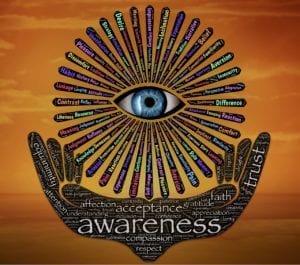 Think you’re good at multitasking? If so, you are just fooling yourself. Or, perhaps more aptly stated, your brain is fooling you. Multitasking is simply a way for us to be tricked into doing a whole bunch of things, poorly, all at the same time. When it comes to managing attention, the human brain cannot multitask. Let’s explore the myth of multitasking.
Think you’re good at multitasking? If so, you are just fooling yourself. Or, perhaps more aptly stated, your brain is fooling you. Multitasking is simply a way for us to be tricked into doing a whole bunch of things, poorly, all at the same time. When it comes to managing attention, the human brain cannot multitask. Let’s explore the myth of multitasking.
Demonstrating the Point
If a picture is worth a thousand words, a live demonstration may be worth ten thousand words. In a recent situational awareness and decision making class I was explaining the science behind why humans are such poor multi-taskers.
Of course, when I do this there is always someone in the class who, for whatever reason, thinks they are great at multitasking. I love it when this happens because I’m prepared.
For this scenario I set up an exercise in which two people get to role play being in charge of an emergency. One of them is going to multitask (guess which one gets that dubious honor?) and the other one gets to perform only a single task.
 The multitasking person has to perform the same activities as the single tasking person plus one additional (physical) activity. The results are always predictable… a train wreck.
The multitasking person has to perform the same activities as the single tasking person plus one additional (physical) activity. The results are always predictable… a train wreck.
The single tasking person’s performance is often nearly flawless while the performance of my multitasking participant turns into a disaster. The multitasker forgets about 90% of the data they were supposed to remember and their performance is fraught with error. The exercise serves as a sad example of how many people fool themselves when it comes to multitasking.
It’s Impossible
 The conscious human brain cannot multitask. This is backed up by science and the analysis using functional magnetic resonance imaging (fMRI) data. What happens when we try to “pay attention” to two things at once is the brain give its neuronal attention to one thing… then the other… then back to the first – never are we able to give simultaneous attention to two things.
The conscious human brain cannot multitask. This is backed up by science and the analysis using functional magnetic resonance imaging (fMRI) data. What happens when we try to “pay attention” to two things at once is the brain give its neuronal attention to one thing… then the other… then back to the first – never are we able to give simultaneous attention to two things.
Responders can be lulled into believing they are good multitaskers because they do it (or appear to do it) so often with so little consequence that it gives them the confidence to think they are good at it. Where, in reality, they’re not good at it and luck may be the only thing standing in the way of a disaster.
The Exceptions
 There are two notable exceptions to the myth of multitasking. A person who works in an environment where they must shift attention between multiple stimuli frequently can develop a skill set to better manage how their brain shifts attention between tasks and how quickly their attention can shift back to the first task. This still isn’t multitasking at the conscious-attention level. Rather, it is a person’s ability to develop attention shifting speed, coupled with an ability to hold more information in their short-term memory buffer. Without sharing all the details, practice in environments requirement multiple shifts of attention can improve performance.
There are two notable exceptions to the myth of multitasking. A person who works in an environment where they must shift attention between multiple stimuli frequently can develop a skill set to better manage how their brain shifts attention between tasks and how quickly their attention can shift back to the first task. This still isn’t multitasking at the conscious-attention level. Rather, it is a person’s ability to develop attention shifting speed, coupled with an ability to hold more information in their short-term memory buffer. Without sharing all the details, practice in environments requirement multiple shifts of attention can improve performance.
The second exception occurs in the subconscious brain. While the conscious brain cannot multitask, the subconscious brain can. This is because the tasks we preform subconsciously are, well, outside of conscious awareness. The things you pay attention to subconsciously are based on past exposure to similar environments, training and habits developed over time. Think about how you drive a car. If you are an experienced drive, you probably don’t give much conscious attention to how you drive because you are driving your car using mostly subconscious processing of information.
Rich Gasaway’s Advice
 Concede to the vulnerabilities of your brain. Acknowledge that multitasking is a myth and avoid it by focusing on performing only one critical task at a time. Proper staffing plays a big role in our efforts to avoid multitasking both on the front line and at the command level. Preloading an incident with the proper number of responders can reduce the exposure to the need to perform multiple concurrent tasks.
Concede to the vulnerabilities of your brain. Acknowledge that multitasking is a myth and avoid it by focusing on performing only one critical task at a time. Proper staffing plays a big role in our efforts to avoid multitasking both on the front line and at the command level. Preloading an incident with the proper number of responders can reduce the exposure to the need to perform multiple concurrent tasks.
When you are in an environment where your attention must shift quickly between tasks, write things down (on worksheets) or use other prompts (like acronyms or repetition) to help you remember information. Also, in a dynamically changing environment two heads are truly better than one by expanding the attentional capacity, less things are likely to be missed or forgotten.
Action items
 Discuss why people think they are good multitaskers when, in fact, their brain cannot multitask at all.
Discuss why people think they are good multitaskers when, in fact, their brain cannot multitask at all.- Discuss ways first responders can avoid multitasking during high stress, high consequence operational periods.
- Share some ideas for how situational awareness can be impacted from multitasking.
_____________________________________________________

If you are interested in taking your understanding of situational awareness and high-risk decision making to a higher level, check out the Situational Awareness Matters Online Academy.
CLICK HERE for details, enrollment options and pricing.
__________________________________
Share your comments on this article in the “Leave a Reply” box below. If you want to send me incident pictures, videos or have an idea you’d like me to research and write about, contact me. I really enjoy getting feedback and supportive messages from fellow first responders. It gives me the energy to work harder for you.
Thanks,

Email: Support@RichGasaway.com
Phone: 612-548-4424
SAMatters Online Academy
Facebook Fan Page: www.facebook.com/SAMatters
Twitter: @SAMatters
LinkedIn: Rich Gasaway
YouTube: SAMattersTV
iTunes: SAMatters Radio
